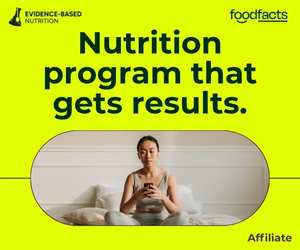
“Net zero beef?” Why sustainability claims need more than headlines





Coral Red: Mostly False
Orange: Misleading
Yellow: Mostly True
Green: True
Learn more about our fact-checking policies
On May 6th, Agricarbon, a company specialising in soil carbon measurement, published a case study titled “Net Zero Beef Is Now a Reality.” As a linguist, I was immediately struck by the contrast between the certainty that resonates behind this headline, and the more provisional tone of the introduction: “Regeneratively farmed beef cattle could sequester more carbon than they emit, according to modelling results from a McDonald's-sponsored project at FAI Farms.”
Whether this represents a true breakthrough or is still a work in progress, the premise is undeniably intriguing. For the general public, who have long been told that reducing beef consumption is essential for a sustainable food system, the promise of net zero beef might suggest that no dietary changes are needed after all. However, after consulting several experts to examine the facts behind these claims, it quickly becomes clear that the situation is far more complex.
Regardless of the accuracy of these claims, the search for ways to make beef production more sustainable is both positive and necessary. The real issue arises when we leap to the conclusion that such innovations mean dietary changes are no longer required. We need to embrace an AND rather than an OR approach: reduce beef consumption AND make its production more sustainable.
Let’s explore this further, drawing on insights from experts. Matthew Shribman, CEO and Chief Scientist at AimHi Earth, suggests to reframe the issue to better understand its implications:
“Imagine a rich valley overflowing with thriving nature: forests, wetlands, natural meadows. There’s a lot of carbon stored here. And, as well as all of that carbon, this thriving nature is producing fresh air, clean water and more.
Now let’s imagine we have to clear some of this wild nature to grow food to eat.
To keep it simple, let’s focus on our protein supply.
Do we focus on
(a) raising cows, or
(b) growing beans?
If we choose cows, we will have to clear 20x more land to get the same amount of protein (source).
Of course, when we clear this wild nature and turn it into farmland, we’re going to lose some of those “ecosystem services”, like fresh air and clean water. And we’re going to lose a lot of stored carbon too.
Intuitively, it therefore makes sense that beans are almost always going to be more sustainable than beef, since they take up so much less space. And that intuition is spot on.
This new method for farming beef claims to be “carbon-negative” – it claims to store carbon. But there’s an important question to ask here: “carbon-negative relative to what?”.
The answer is that it’s carbon negative relative to cleared farmland.
In other words, it stores carbon compared to a depleted bit of land used for industrial farming.
This isn’t a bad thing - it’s a good thing. Every little helps, and so this piece of research isn’t pointless.
What if we had to choose?
But crucially, if we had to choose between:
- keep 95% of the land wild, and grow beans;
- clear all the land and farm beef with this new method;
- clear all of the land and farm beef on it intensively
…then the first option is by far the most valuable among them.
An even better option would be to integrate cows into the bean farm, as part of a healthy ecosystem, where there are just a few cows, acting as a service to the land… rather than as a product for McDonald’s…”
Environmental science is inherently complex, because it has to consider numerous interrelated factors to fully grasp the impact of various practices and policies. Matthew Shribman offers valuable perspective by placing innovations aimed at reducing the carbon footprint of beef production within the broader context of food systems and sustainability. To further unpack the specific findings of this study, we also spoke with environmental scientist Nicholas Carter, who examined its details more closely:
“FAI [Food Animal Initiative] Farms’ “net zero beef” claim, funded by McDonald’s, is based on selective modeling from just 3 of 105 fields, with major flaws like shifting sample sites, missing bulk density data, and uncounted carbon from imported hay.

The initiative builds on earlier Adaptive Multi-Paddock (AMP) grazing studies in the U.S. backed by McDonald’s, Shell, Exxon, and Cargill, tying regenerative ranching to Big Oil’s climate PR. Tools like GWP* are used to downplay methane’s emissions from cattle, basically allowing a baseline of emissions that aren't counted. Meanwhile, the farm’s biodiversity and soil carbon levels remain far below those of rewilded ecosystems. This is corporate-funded messaging designed to protect beef supply chains and fossil fuel interests, not deliver real climate solutions.”
Innovation in livestock systems is valuable, but it must be evaluated alongside broader land use priorities, biodiversity goals, and genuine climate impact—not just carbon accounting.
Rather than viewing regenerative beef as a replacement for dietary shifts, it should be seen as one piece of a much larger puzzle. If we are serious about addressing the climate and ecological crises, we must resist the temptation of convenient narratives and remain committed to both reducing meat consumption and improving how meat is produced.

Sources + Further Reading
World Resources Institute (2016). “Shifting Diets for a Sustainable Food Future: Creating a Sustainable Food Future, Installment Eleven.”
Changing Markets Foundation (2023). “Seeing Stars: the new metric that could allow the meat and dairy industry to avoid climate action.”
Monbiot, George (2025). “New reports tell us cattle and sheep farming can be sustainable – don’t believe them, it’s all bull.”



Foodfacts.org is an independent non-profit fact-checking platform dedicated to exposing misinformation in the food industry. We provide transparent, science-based insights on nutrition, health, and environmental impacts, empowering consumers to make informed choices for a healthier society and planet.
🛡️ Stand Against Nutrition Misinformation
Misinformation is a growing threat to our health and planet. At FoodFacts.org, we're dedicated to exposing the truth behind misleading food narratives. But we can't do it without your support.
Your monthly donation can:
✅ Combat viral diet myths and corporate spin
✅ Support our team of dedicated fact-checkers and educators
✅ Keep our myth-busting platforms running

Was this article helpful?

















.svg)
